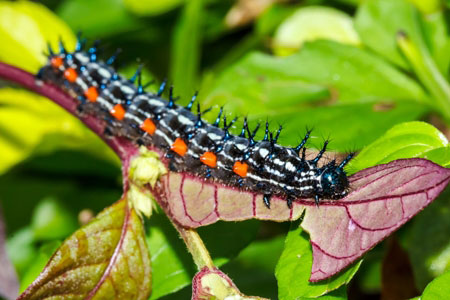Home » Bugs » Lawn Pests »
Active Seasons




Appearance and Size Facts
- Exist in many sizes and colors depending on the species
- Few appear treacherous with long, curving, spiky horns projecting from the body
- Many have dull or bright colors with unusual looking patterns
- Some possess hairs attached to poison sacs
- When contacted with a substrate such as human skin, will “sting” the victim, leaving a painful, swollen area
- Size: Adult moths and butterflies can range from a 1/12 inch wingspan in the smallest of moths, upwards to almost 12 inch wingspans in some of the largest tropical butterfly and moth species
We offer caterpillar control in the following locations and their surrounding areas:

Behavior and Habitat of Caterpillars
A caterpillar is the larval stage of butterflies and moths. The caterpillar hatches from a tiny egg and will eventually pupate and turn into an adult butterfly or moth. This larval stage usually lasts from two weeks to about a month.
The larval or caterpillar stage has many different names: inchworm, looper, cutworm, fruitworm, hornworm, silkworm, and even woolly bear. The caterpillar is the growth stage, and thus the daily agenda is simple: eat!
Caterpillars mostly eat the leaves of flowering plants and trees using their powerful jaws. They are very limited in their diet and many species will only eat the leaves of a single type of plant. Only a few caterpillars are carnivores. Most caterpillars are discovered fully grown when wandering across lawns, driveways, or sidewalks.

Signs of Infestation of Caterpillars
A sign of caterpillar infestation are large holes in leaves or fruits, as well as the caterpillars themselves.

Tips for Prevention of Caterpillars
Lay floating row covers over vegetable gardens and make sure to grow crops in a different location every year. Planting host-specific refuges for caterpillars, such as milkweed plants for Monarch butterfly caterpillars, may also detract from destroying garden crops, flowers, or other ornamentals. Handpicking most caterpillars, except those which are stinging, can also be beneficial.



